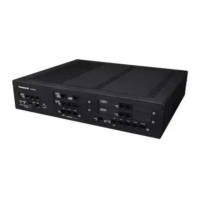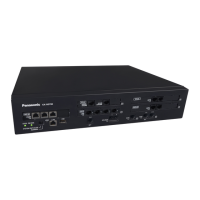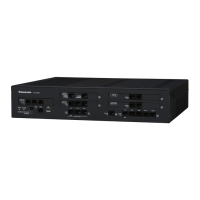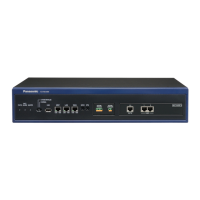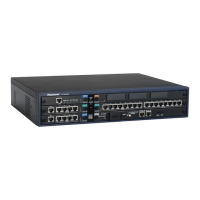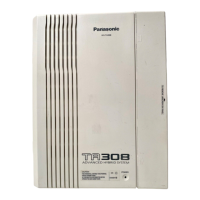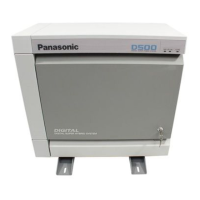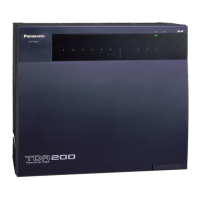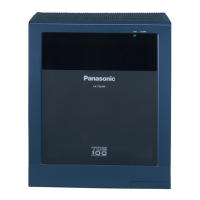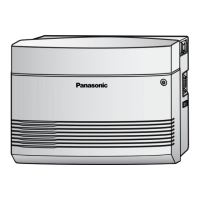5.2 System Configuration—Extensions
5.2.1 IP Proprietary Telephone (IP
-PT)
Description
IP Proprietary Telephones (IP-PTs) are telephones that make and receive calls using IP and that connect to
the PBX over a LAN. Except for their use of IP, they function almost identically to traditional proprietary
telephones.
IP-PTs have two Ethernet ports for connection, primary and secondary. They are connected to the PBX through
a network hub or other splitting device, and can have a PC connected to the secondary Ethernet port.
[Connection Example]
Primary
Ethernet Port
Secondary
Ethernet Port
V-IPEXT
PBX
PC
IP-PT
Private IP
Network
Main Office
Branch Office
IP-PT
IP-PT
Conditions
• IP-PT registration is required through system programming before an IP-PT can be used with the PBX. An
IP-PT cannot be used unless an extension number is assigned. However, depending on system
programming, registration may occur completely automatically, or may require only inputting the desired
extension number.
For details on how to register IP-PTs, refer to the Installation Manual.
• The KX-NT265 does not have a secondary Ethernet port.
• The following optional devices are available for the KX-NT300 series (except KX-NT321) IP-PT:
– KX-NT307(PSLP1528) Bluetooth Module
– KX-NT303 Add-on 12 Key Module (not available for KX-NT366)
– KX-NT305 Add-on 60 Key Module (not available for KX-NT366)
• The following optional devices are available for the KX-NT553/KX-NT556 IP-PT:
– KX-NT505 Add-on 48 Key Module (maximum four units connectable).
• DSP Resource Usage
Making a call from an IP-PT requires a certain number of DSP resources, depending on the codec used.
If all DSP resources are in use, this operation cannot be performed. To ensure a minimum level of
performance, DSP resources can be reserved for VoIP communication. (® 5.5.4 DSP Resource Usage)
However, DSP resources are not required for P2P calls. (® 5.2.3 Peer-to-Peer (P2P) Connection)
• KX-NT307(PSLP1528) Bluetooth Module
A Bluetooth wireless headset can be registered to a KX-NT300 series (except KX-NT321) IP-PT containing
the KX-NT307(PSLP1528) Bluetooth Module through personal programming. When Headset Mode is off,
the Bluetooth headset can be used to answer calls or redial. In this case, Headset Mode will turn on
automatically, and will turn off after you hang up.
484 Feature Guide
5.2.1 IP Proprietary Telephone (IP-PT)
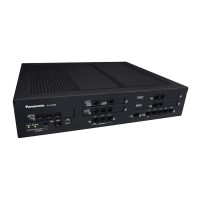
